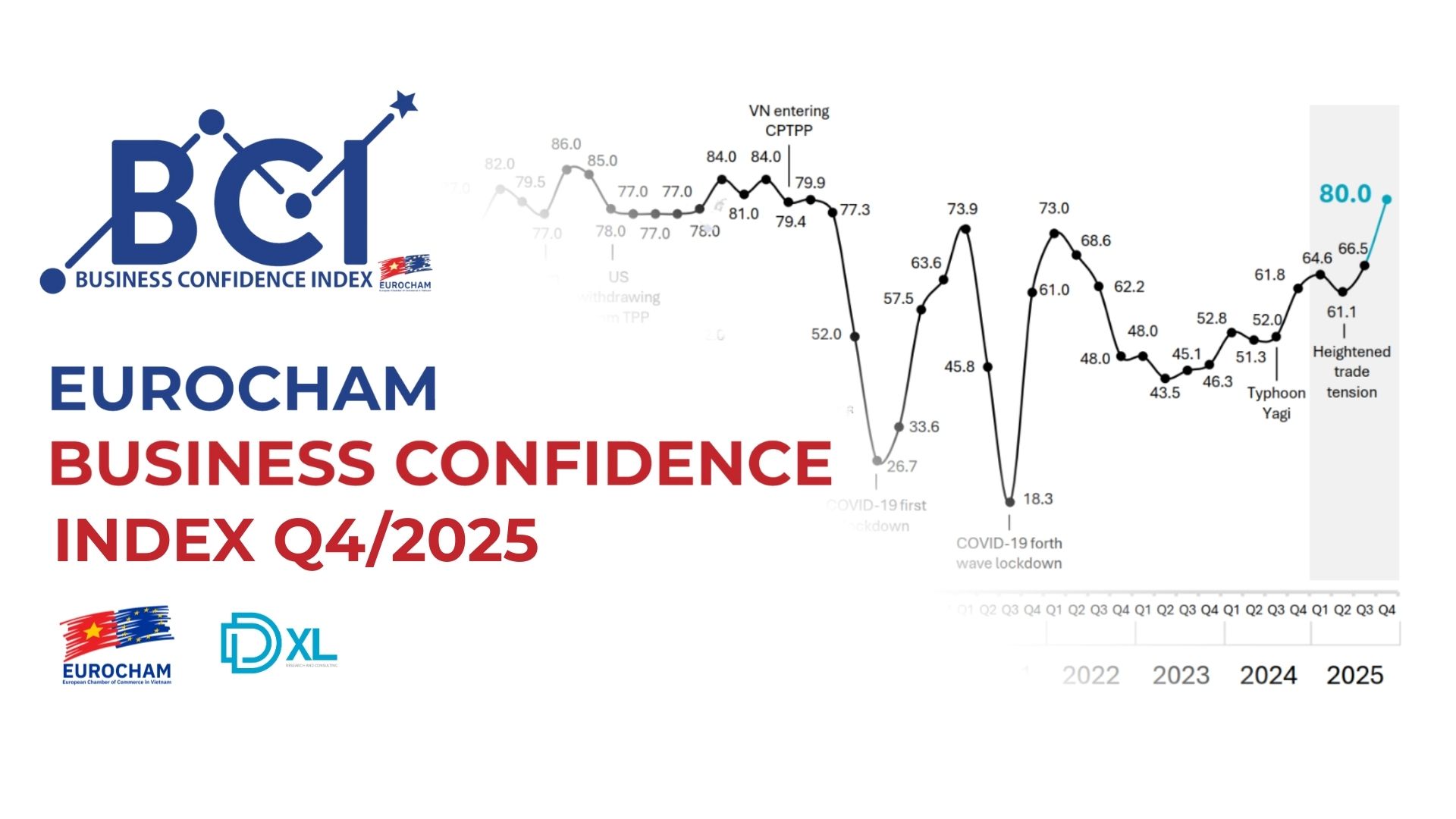EuroCham Vice-Chairman Thang Nguyen offers a candid look at Vietnam’s labour market. He examines the hurdles faced by businesses amidst rapid economic growth, from skills mismatches to retention struggles. His insights shed light on the unique dynamics shaping Vietnam’s workforce and offer valuable perspectives for companies looking to thrive in this evolving landscape. Discover the realities and potential solutions in Vietnam’s quest for a competitive, skilled labour force.
Recent reports suggest Vietnamese workers need to improve in areas like organisation, teamwork, and long-term career focus. Given your extensive experience in Vietnam, how do you perceive the strengths and weaknesses of the Vietnamese workforce? Could you also elaborate on how the skills gap and the focus on short-term gains impact foreign companies operating in Vietnam?
In Vietnam, we have a large workforce- around 56 million people of working age. This is a big pool of potential workers. Yet, only about 11% of people over 25 years old have a university degree. This creates a competitive environment for companies across all sectors – state-owned, foreign, local, and private – as they compete to attract and hold onto skilled workers.
For foreign companies setting up operations in Vietnam, finding employees with the right skills is important for a smooth transition and good productivity. However, nearly all new hires require additional training to fully meet the demands of their roles. This shows a clear gap between the skills available in the local workforce and the specific needs of foreign companies.
This skills gap is particularly clear in specialised fields like high-precision engineering, where finding workers with the right technical skills can be very challenging. To overcome this, companies often have to create their own training programs, such as two-year apprenticeships, to prepare people for the specific needs of their industry. While the Ministry of Education and Training is actively trying to improve vocational training, Vietnam’s newly developed industrial sectors means there are not as many people with the deep technical knowledge these jobs require.
The challenges faced by companies in Vietnam extend beyond technical skills. Many employees promoted to management positions lack the experience and training needed to lead larger, diverse teams effectively. Moving from overseeing a small team of two or three lab specialists to managing 20 or 30 people with different backgrounds and skill sets requires a different approach altogether.
Without proper leadership training, managers may struggle to effectively lead their teams, resulting in poor management practices that contribute to an unhappy and unproductive workplace, or in other words, overall lack of professionalism. This often leads to high employee turnover, creating a cycle of constant hiring and departures. This instability, particularly among managers, makes it difficult for companies in Vietnam to maintain stability and achieve lasting growth.
The situation is further complicated by the tendency for workers to prioritise short-term rewards over long-term career development. To attract and retain talent, companies often engage in a “bidding war,” offering slightly higher salaries than their competitors, especially during the orders fulfilment campaigns. For example, if the average monthly salary for a position is VND6.5 million ($250), a company might offer VND 7.0 million ($270) and post a big sign with this information right at the entrance of the industrial park to catch the eye of potential employees.
Smaller companies also try to tempt employees away from larger corporations by offering them higher salaries and more prestigious job titles, even if those employees do not have the experience to match those positions. This can lead to confusion about what different job titles actually mean and what skills a person truly possesses. For instance, a production supervisor who is normally responsible for one production line who gets a quick promotion to manager level might not have the management experience needed to handle more complex tasks like overseeing the full production process of a factory.
This focus on short-term rewards can be problematic. This lack of stability hurts companies and limits opportunities for workers to learn and grow in their careers.
On a positive note, the Vietnamese workforce in general has a clear advantage: they are quick learners and very willing to learn new things. With the right training, coaching, and development programs in place, Vietnam has strong potential to build a robust, high-quality workforce to support the country’s economic growth ambition. Over time, the more developed, more established generations will become role models for the newer generation to learn from, then the Vietnamese workforce will be progressively more professional.
Could you share a specific example of a challenge you have faced with employee turnover or other workforce-related issues in Vietnam, and what lessons you learned from that experience?
One of the biggest challenges is the high turnover rate among factory workers in southern provinces like Dong Nai and Binh Duong. In these areas, it is not uncommon to see 15-20% of employees leave within their first year. This is largely because about 80% of the workforce in this “major economic triangle” are people who have moved there from other provinces, hoping to find better jobs and earn more money.
This strong desire for improvement means that many workers see changing jobs frequently as a way to get ahead. It is common to see resumes in the southern provinces with a lot of job changes in a short amount of time. These workers, often from other parts of Vietnam, are mainly looking for higher salaries. This constant movement of workers disrupts production and can affect the quality of the products being made.
While the salary difference between northern and southern Vietnam is generally small, the turnover rate in the south is much higher. In the north, factory work is often seen as a desirable career path, offering stability and advancement opportunities compared to traditional farming. Additionally, many northern factories foster a close-knit, family-like atmosphere, promoting employee loyalty and reducing turnover. Northern workers often prioritise job security and the convenience of working near their families and communities, making them more likely to stay with a company long-term even with slightly lower wages.
Understanding of these regional differences would help companies develop specific regional strategies to retain and develop the good talents in this challenging labour market.
Given the challenges and opportunities you have observed, what recommendations would you offer to enhance the capabilities of the Vietnamese workforce and make them even more valuable to both local and foreign businesses?
Investing in education and training is a very important solution to the skills gap. However, these programs should not solely focus on technical skills. It is equally important to teach students how modern businesses operate as a whole.
In my experience, a significant portion of workplace issues arise from employees not fully understanding the bigger picture of how their company operates. They may excel in their individual roles but lack knowledge of how their work fits into the overall operation. For example, many employees misunderstand the roles of other departments, leading to frustration and conflict. This issue is not limited to entry-level workers. It is often prevalent among managers and senior staff as well.
Improving education programs to include broader business knowledge would be a big step forward. Employees would better understand how their individual tasks contribute to the company’s goals and success. This can lead to less conflict between departments, increased teamwork, and a stronger sense of shared purpose.
Hands-on training opportunities like internships and apprenticeships are also extremely important. They allow students to experience real business situations, helping them apply what they’ve learned in school to actual work scenarios. This is invaluable for bridging the gap between theory and reality.
These training initiatives can significantly improve the quality and the professionalism of the Vietnamese workforce, making them more attractive to both local and foreign businesses. A skilled and knowledgeable workforce is essential for Vietnam to increase its productivity and compete globally. Investing in better education today will pay off in the future with a stronger economy and greater opportunities for everyone.







